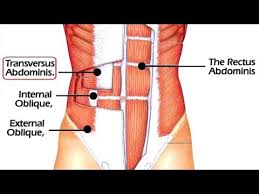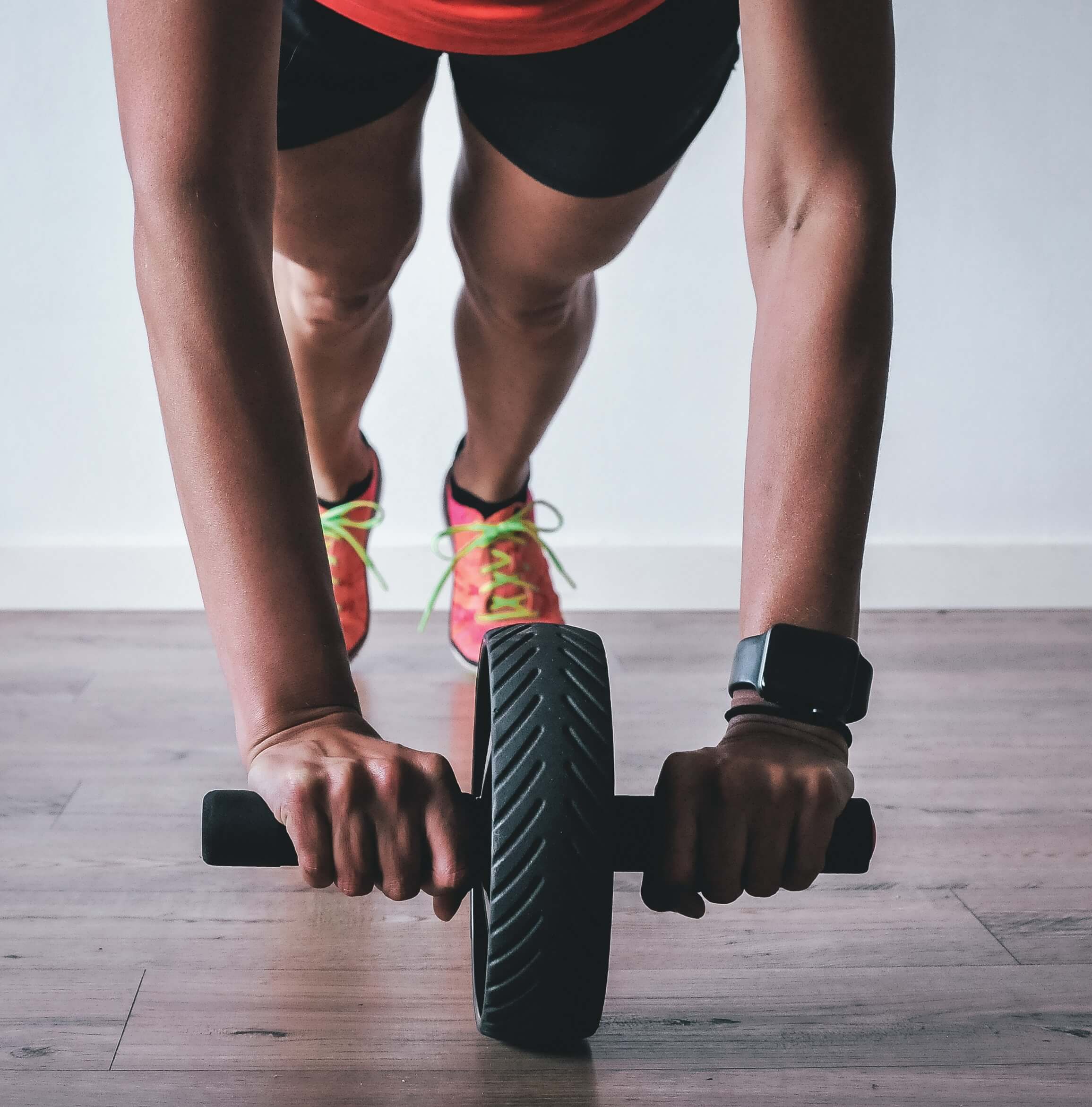You may not have heard of the transverse abdominis (TVA) muscle, but it’s an extremely important muscle that acts as a stabilizer for the entire lower back and core muscles. It is one of the main core stabilizing muscles of the lumbar spine. A weak TVA is often one of the many reasons people may experience lower back pain. If you’re looking to alleviate lower back pain, adding some specific exercises to strengthen your TVA muscle may be helpful. The TVA is the deepest layer of abdominal muscles and runs between the ribs and the pelvis, horizontally from front to back. When activated, the TVA muscles create a deep natural “corset” around the internal organs and lumbar spine. This activation flattens the abdominal wall, compresses the viscera (internal organs), supports the internal organs and helps expel air during forced exhalation. One major function of the TVA muscles is to stabilize the spine during movements that involve the arms and legs.

This is called Intra-abdominal pressure and is best described like this:
Imagine a saggy balloon and imagine the rubber of the balloon is a bit like the fascia, when we blow up the balloon we create pressure in that fascia. Now imagine that balloon is attached to the pelvis, spine and ribs, when I blow up the balloon I create a pressure that locks the pelvis, ribs and spine together and create a support so the structure works effectively as one unit. Now take your finger and poke it into the inflated balloon, we create more pressure, but now we can control the amount of pressure being put into the fascia (or outside of the balloon).
In order to be able to lift heavy weights, there is one muscle in particular that needs to function incredibly well, to stabilise the spine and pelvis, and that muscle is the Transverse Abdominis. Now yes, this muscle, as with all muscles doesn’t function on its own, it works with a whole group of muscles collectively known as the “core”.
Strengthening Your TVA Muscles and Core.
If the TVA muscles are weak, the abdominal wall will begin to bulge forward and the pelvis may rotate forward and increase lordosis (inward curvature) in the spine. This can result after pregnancy and may also be associated with weight gain or lack of exercise. A recent study shows that weak TVA muscles may be to blame for lower back pain. Use these tips for strengthening exercises to combat low back pain.
How to Activate the Transverse Abdominis (TVA).
There are generally two ways to activate the TVA muscles for improved core stabilization.
Bracing.
This refers to an isometric contraction of the TVA by contracting the muscles of the abdomen and holding them tight without movement. When bracing, imagine that you are getting ready for a punch to your belly, or preparing to lift a heavy object. The goal is to tighten the muscles without sucking in, or expanding your abdomen. To activate the TVA with bracing, you will maintain an isometric hold in this position for 6 to 10 seconds. Release and repeat several times.
Hollowing.
This refers to a technique to activate the TVA that occurs as you suck in and compress the abdomen. To perform this technique, contract your abdomen and pull your belly button back toward your spine to make your abdomen as small as possible. Once you’ve completed this movement, maintain an isometric hold of this compressed position for 6 to 10 seconds. Release and repeat. Bracing has been found to be more effective in stabilizing the lumbar spine than hollowing. Bracing results in the contraction of the entire core muscle group, and particularly the TVA. The best way to use the bracing technique is to contract and hold the abdomen (don’t suck in the gut as in hollowing) and continue to breathe in and out. You can practice bracing while sitting, walking, or lying down. The bracing technique can also be used during abdominal and core workouts.

More Exercises for TVA Muscles
Start working your TVA muscles by preforming the in / out crunch. Once you can activate the TVA muscles, you can progress to the following exercises for all the abdominal muscles and the core:
- Plank
- Side Plank
- Bicycle Crunch
- Knee raise hold
- Lying leg raise
- Reverse Crunch
- Ab Roller


